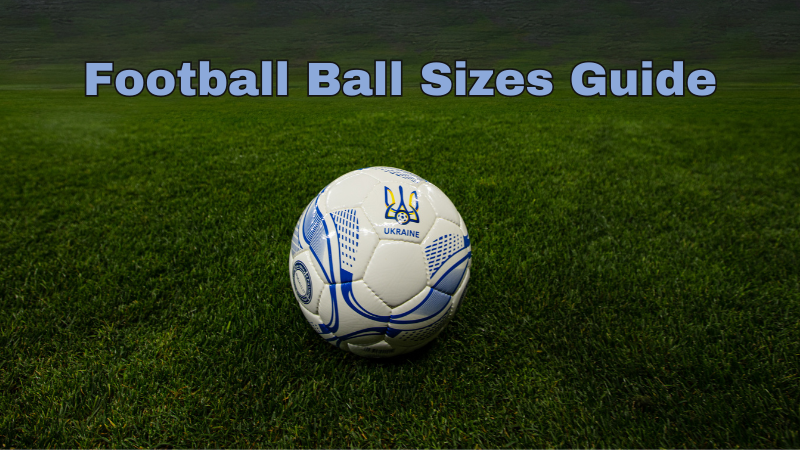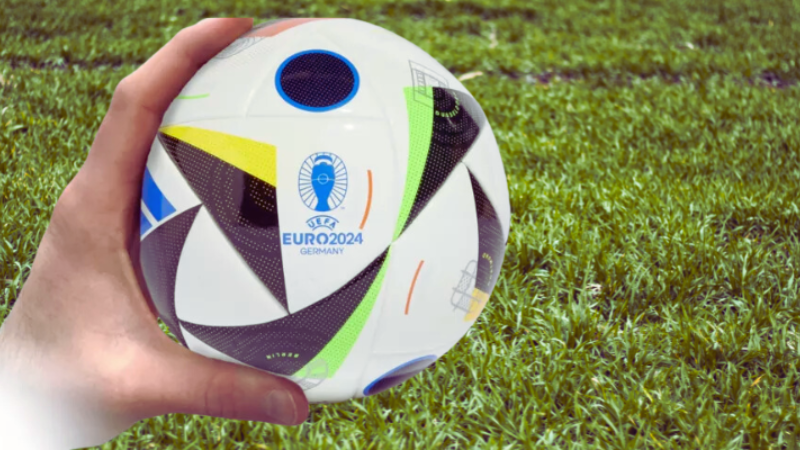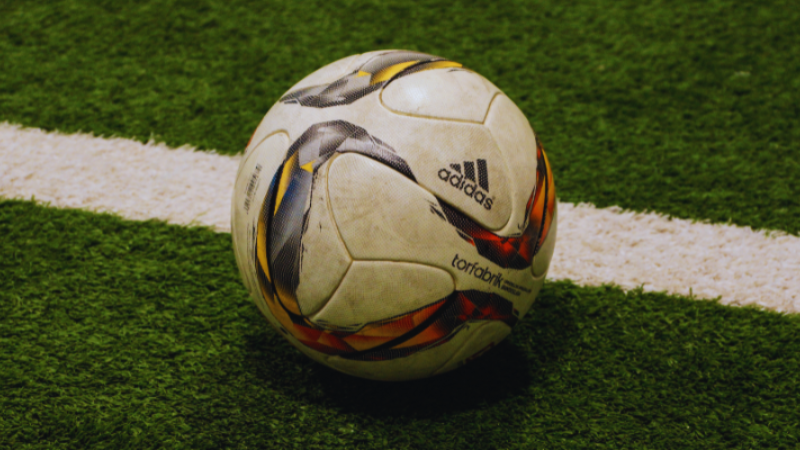Football Ball Sizes Guide

Soccer balls (or footballs in most parts of the world) come in many colors, materials, and different football ball size.
If you are new to soccer or have children who play soccer, you may be confused about which size soccer ball is best for which age group.
In this article, we’ll explore the football ball official sizes guide and how it changes with age.
Football Sizes by Age

Size 1 (Mini or Skills Ball)
- Intended Audience: Primarily designed for children under the age of 4 who are just beginning to explore the world of football.
- Purpose: In football sizes by age list these balls serve as introductory tools, aiding in the development of fundamental motor skills such as kicking, dribbling, and coordination.
- Features: Size 1 footballs are the smallest in official sizing, allowing tiny hands and feet to grasp and control them comfortably. They are lightweight and often brightly colored to capture the attention and imagination of young players.
- Usage: While not typically used in formal matches, size 1 balls are frequently employed in preschool programs, daycare centers, and backyard play. They are also popular as novelty items or promotional giveaways.
- Weight: Typically ranges from 100 to 160 grams (3.5 to 5.6 ounces).
- Size: Circumference is approximately 45-51 centimeters (18-20 inches).
Football Ball Size 2
- Intended Audience: Size 2 balls cater to very young children and toddlers, typically under the age of 4. They provide a stepping stone between introductory play and structured training.
- Purpose: These balls are utilized for honing basic football skills such as dribbling, passing, and shooting in a fun and engaging manner.
- Features: Size 2 footballs are smaller than standard balls, but larger than their size 1 counterparts. They are still lightweight and easy for small hands and feet to manipulate. Typically, they retain the colorful and vibrant design elements favored by young players.
- Usage: While not commonly seen in official matches or organized leagues, size 2 balls find their place in recreational settings, early childhood programs, and as collector’s items for enthusiasts of miniature football paraphernalia.
- Weight: Usually between 200 to 250 grams (7 to 9 ounces).
- Size: Circumference is approximately 53-58 centimeters (21-23 inches).
Size 3
- Intended Audience: Balls size 3 are tailored for children aged 4 to 8, encompassing the early years of youth football development.
- Purpose: These balls are instrumental in refining foundational skills such as dribbling, passing, and controlling the ball. They provide a bridge between introductory play and more structured training sessions.
- Features: These footballs are smaller and lighter than standard adult balls, making them manageable for young players to handle. They are constructed to withstand the rigors of training and recreational play, often featuring durable materials and reinforced seams.
- Usage: These balls are prevalent in youth football programs, school leagues, and recreational matches for young children. They are also utilized in training drills and skill-building exercises to foster technical proficiency and confidence on the field.
- Weight: Typically between 300 to 320 grams (10.6 to 11.3 ounces).
- Size: Circumference is approximately 58-60 centimeters (23-24 inches).
Size No. 4 – Ball Size in Football
- Intended Audience: Size 4 balls are designed for youth players aged 9 to 14, encompassing the pre-adolescent years of football development.
- Purpose: These balls facilitate the refinement of technical skills, tactical understanding, and physical coordination as players transition from introductory play to more competitive environments.
- Features: Size 4 footballs are slightly smaller and lighter than standard adult balls, providing young players with a manageable yet challenging tool for training and matches. They boast durable construction and high-quality materials to withstand frequent use on various playing surfaces.
- Usage: Size 4 balls are ubiquitous in youth football leagues, club competitions, and training sessions. They are also utilized in school programs, community initiatives, and recreational matches for pre-teen players honing their skills and passion for the game.
- Weight: Between 350 to 390 grams (12.3 to 13.8 ounces).
- Size: Circumference is approximately 63.5-66 centimeters (25-26 inches).
Football Ball Official Size 5

- Intended Audience: Size 5 balls are recommended for players aged 14 and above, encompassing adolescents, adults, and professional athletes.
- Purpose: These balls are the pinnacle of footballing equipment, designed to meet the rigorous demands of competitive matches, training sessions, and professional tournaments.
- Features: Size 5 footballs adhere to strict regulations set forth by FIFA, ensuring uniformity in size, weight, and performance characteristics. They are constructed with premium materials, precision stitching, and advanced technology to deliver optimal aerodynamics, durability, and ball control.
- Usage: Size 5 balls are the preferred choice for official matches at all levels of football, from grassroots leagues to international competitions. They are also utilized in elite training environments, professional academies, and recreational play among seasoned players seeking the highest standards of performance and reliability.
- Weight: Standard weight ranges from 410 to 450 grams (14.5 to 16 ounces).
- Size: Circumference is approximately 68-70 centimeters (27-28 inches).
How to Choose the Right Football Ball?
Choosing the right football ball involves considering several factors.
- Consider the Purpose:
- Determine whether you need the ball for matches, training, or recreational play.
- Match balls are designed for official matches and have specific requirements regulated by organizations like FIFA.
- Training balls are more durable and suitable for practice sessions.
- Recreational balls are versatile and can be used for casual play with friends or family.
- Select the Correct Size:
- Choose a ball size appropriate for the age group and skill level of the players.
- Refer to size guidelines (e.g., Size 3 for young children, Size 5 for adults) to ensure the ball is suitable.
- Check the Quality and Material:
- Opt for high-quality materials such as PU (polyurethane) or PVC (polyvinyl chloride) for durability and performance.
- Look for balls with reinforced stitching and a sturdy bladder to maintain shape and air retention.
- Consider the Playing Surface:
- Select a ball suitable for the playing surface (e.g., grass, turf, indoor).
- Match balls designed for specific surfaces offer better grip and control.
- Test the Feel and Weight:
- Hold the ball to assess its weight and feel comfortable in your hands.
- Ensure the ball’s weight is appropriate for the intended age group and playing conditions.
- Check for Certification:
- If purchasing a match ball, ensure it meets certification standards set by organizations like FIFA for quality and performance.
- Set a Budget:
- Determine your budget range and explore options within that range.
- Balance affordability with quality to find the best value for your needs.
- Read Reviews and Recommendations:
- Research online reviews and seek recommendations from experienced players or coaches.
- Feedback from other users can provide valuable insights into the performance and durability of different ball models.
Conclusion of Football Ball Sizes Guide
In conclusion, selecting the right football ball official size is important for optimal performance, safety, and enjoyment on the field.
From mini-balls in size 1 to standard match balls in size 5, each size fulfills a distinct role in both training and actual gameplay.
FAQ
What is the football ball official size❓
Official football size range from Size 1 (mini) to Size 5 (standard match ball).
What age group uses footballs size 3❓
Size 3 footballs are typically used by children aged 4 to 8.
What size football do professionals use❓
Size 5 footballs are the standard choice for professional matches.
Can adults use Size 4 footballs❓
✅ Yes, Size 4 footballs are suitable for both youth and adult players, but they are primarily used in youth leagues.
What are mini-balls used for❓
Mini-balls (Size 1) are used for skill development and introductory play, often for toddlers and young children.
Are all footballs the same weight❓
❌ No, footballs come in various weights depending on their size and intended use.
Can I use a Size 5 ball for training❓
✅ Yes, Size 5 balls can be used for training, but some players may prefer lighter balls for specific drills.
Are there specific balls for indoor play❓
✅ Yes, there are footballs designed specifically for indoor surfaces, featuring reduced bounce and durability.
What are different sizes of football❓
Football sizes range from size 1 for young children and training drills to size 5, the standard used in professional and international matches.


